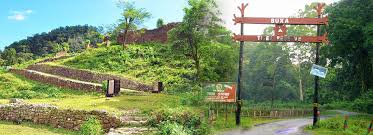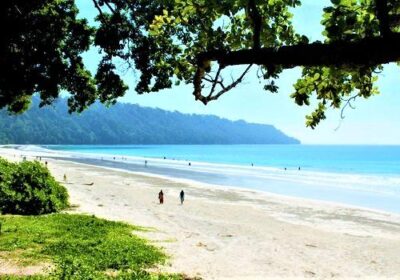Rediscovering History: A Journey to Buxa Fort
Buxa Fort, located in the Buxa Tiger Reserve in the Alipurduar district of West Bengal, India, is a site steeped in history and natural beauty. Perched atop the Buxa Hill, this fort is a testament to the region’s rich historical and cultural heritage. A visit to Buxa Fort not only offers a glimpse into the past but also presents an opportunity to immerse oneself in the breathtaking landscape of the Eastern Himalayas.
The Historical Significance of Buxa Fort
Buxa Fort has a storied past that dates back to ancient times. Originally built by the Bhutanese, the fort played a crucial role in the defense of their kingdom. It later became a significant point of contention between the Bhutanese and the British during the 18th century. The fort was captured by the British in 1865 during the Bhutan War and subsequently used as a detention camp for Indian freedom fighters during the struggle for independence.
Journey to Buxa Fort
The journey to Buxa Fort is an adventure in itself. The trek begins from the small town of Santalabari, situated at the base of Buxa Hill. The trail, surrounded by dense forests and picturesque landscapes, gradually ascends towards the fort. The trek is moderately challenging, taking about two to three hours to complete, but the stunning views and the tranquility of the forest make it worthwhile.
A Glimpse of the Fort
As I reached the summit, the sight of Buxa Fort standing tall amidst the lush greenery was awe-inspiring. Although the fort is now in ruins, its historical significance and the stories it holds are palpable. The remnants of the fort’s walls, watchtowers, and gates offer a window into its storied past. Exploring the fort, I could almost hear the echoes of the past and the tales of bravery and sacrifice.
The Breathtaking Surroundings
The view from Buxa Fort is nothing short of spectacular. From the top, one can see the sprawling Buxa Tiger Reserve, the meandering Jayanti River, and the distant peaks of the Eastern Himalayas. The fort is surrounded by dense forests, home to a diverse array of flora and fauna. Birdwatchers will be delighted by the sight of numerous bird species, including the beautiful hornbills and vibrant kingfishers.
Local Culture and Traditions
The area surrounding Buxa Fort is inhabited by various indigenous communities, each with its own unique culture and traditions. A visit to the nearby villages provides an opportunity to learn about the local way of life. The residents are warm and welcoming, often eager to share their stories and traditions with visitors. The vibrant festivals, traditional dances, and local cuisine offer a rich cultural experience.
Practical Tips for Visitors
For those planning a visit to Buxa Fort, here are a few practical tips:
- Best Time to Visit: The ideal time to visit is between October and April when the weather is pleasant, and the trekking conditions are favorable.
- Trekking Gear: Comfortable trekking shoes, a hat, sunscreen, and plenty of water are essential for the trek to the fort.
- Guides: Hiring a local guide is recommended, as they provide valuable insights into the history of the fort and the surrounding area.
- Accommodation: There are several guesthouses and lodges in Santalabari and Jayanti, offering comfortable stays for visitors.
Reflection and Farewell
As I descended from Buxa Fort, I felt a profound sense of connection to the past and appreciation for the natural beauty that surrounded me. The fort, with its rich history and breathtaking views, had left an indelible mark on my heart. Buxa Fort is not just a historical site; it is a reminder of the resilience and spirit of the people who once inhabited this land.
Visiting Buxa Fort is a journey through time, offering a unique blend of history, culture, and natural beauty. For those seeking an off-the-beaten-path adventure in the lap of nature, Buxa Fort is a destination that promises an unforgettable experience.






Leave feedback about this